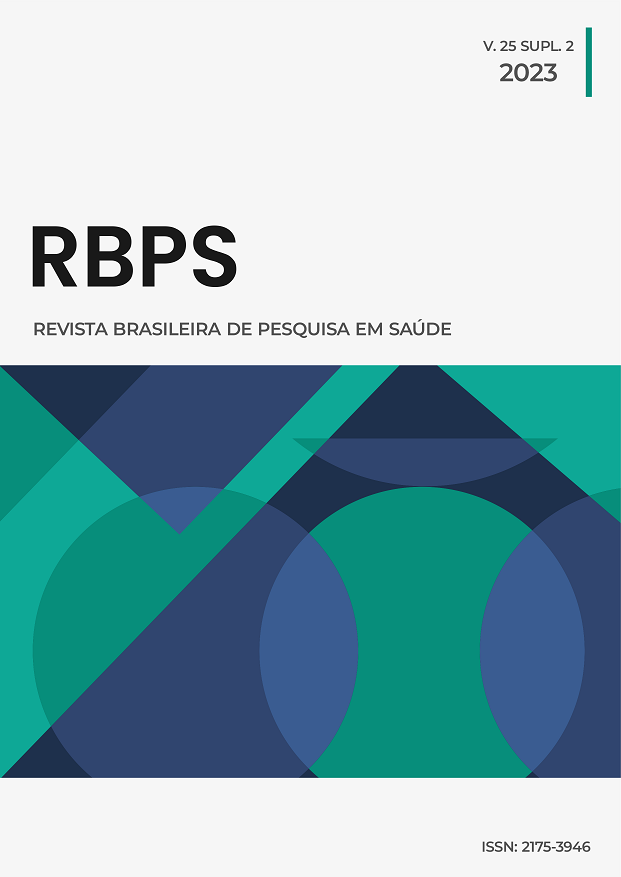Secondary peritonitis associated with violation of the peritoneal cavity in cirrhotic patients decompensated by ascites: an under-discussed condition
DOI:
https://doi.org/10.47456/rbps.v25isupl_2.38972Keywords:
Liver cirrhosis, Peritonitis, Ascites, HerniaAbstract
Introduction: Infectious peritonitis in decompensated cirrhotic patients with ascites results in high morbidity and mortality. While spontaneous bacterial peritonitis and peritonitis secondary to perforation of hollow viscera have been well discussed and present well-defined diagnostic and treatment strategies, peritonitis secondary to violation of the peritoneal cavity, has been poorly studied. Objectives: Identify and describe a group of cirrhotic patients with secondary peritonitis associated with violation of the peritoneal cavity. Methods: A retrospective observational study conducted on cirrhotic patients with ascites, with a polymorphonuclear count greater than 250 cells/mm3 in the ascitic fluid and a record of abdominal or pelvic wall wound, with ascitic fluid leakage for more than 24 hours, preceding the diagnosis of peritonitis. Results: Secondary peritonitis associated with peritoneal cavity violation was observed in 4.25% (10 cases/235 admissions) of the total admissions and 24.4% of the total peritonitis (10 cases out of 45 cases). Most wounds that led to peritonitis were related to complications from umbilical hernias (07/10). The treatment proved to be challenging, with the need to change antibiotic therapy in 70% of the cases. Conclusion: Secondary peritonitis associated with violation of the peritoneal cavity corresponded to a quarter of the cases of peritonitis in cirrhotic patients with ascites treated by a referral service. Further studies are needed to help improve diagnostic, treatment and possible prophylaxis strategies.
Downloads
References
Runyon BA. Ascites and Spontaneous Bacterial Peritonitis. In: Schiff ER, Maddrey WC, Sorrell MF. Schiffs Disease of the Liver. 11th ed. Wiley-Blackwell; 2011; p. 393-419.
Conn HO. Spontaneous peritonitis and bacteremia in Laennec`s cirrhosis caused by enteric organisms: A relatively common but rarely recognized syndrome. Ann Intern Med. 1964;60(4):568-579.
Garcia-Tsao G. Spontaneous bacterial peritonitis: a historical perspective. J Hepatol. 2004;41(4):522-527.
Wiest R, Schoelmerich J. Secondary peritonitis in cirrhosis: “Oil in fire”. J Hepatol. 2010;52(1):7-9.
Angeli P, Bernardi M, Villanueva C, Francoz C, Mookerjee RP, Trebicka J, Krag A, Laleman W, Gines P. EASL Clinical Practice Guidelines for the management of patients with decompensated cirrhosis. J Hepatol. 2018;69(2):406-460.
Runyon BA, Hoefs JC. Ascitic fluid analysis in the differentiation of spontaneous bacterial peritonitis from gastrointestinal tract perforation into ascitic fluid. Hepatology. 1984;4(3):447-450.
Akriviadis EA, Runyon BA. Utility of an algorithm in differenti¬ating spontaneous from secondary bacterial peritonitis. Gastro¬enterology. 1990;98(1):127-133.
Soriano G, Castellote J, Alvarez C, Girbau A, Gordillo J, Baliellas C, Casas M, Pons C, Román EM, Maisterra S, Xiol X, Guarner C. Secondary bacterial peritonitis in cirrhosis: a retrospective study of clinical and analytical characteristics, diagnosis and management. J Hepatol. 2010;52(1):39-44.
Ariza X, Castellote J, Lora-Tamayo J, Girbau A, Salord S, Rota R, Ariza J, Xiol X. Risk factors for resistance to ceftriaxone and its impact on mortality in community, healthcare and nosocomial spontaneous bacterial peritonitis. J Hepatol. 2012;56(4):825-832.
Piano S, Fasolato S, Salinas F, Romano A, Tonon M, Morando F, Cavallin M, Gola E, Sticca A, Loregian A, Palú G, Zanus G, Senzolo M, Burra P, Cillo U, Angeli P. The empirical antibiotic treatment of nosocomial spontaneous bacterial peritonitis: results of a roandmized, controlled clinical trial. Hepatology. 2016;63(4):1299-1309
Rosenblatt R, Tafesh Z, Shen N, Cohen-Mekelburg S, Kumar S, Lucero C, Brown RS, Verna E, Fortune B, Jesudian A. Early para¬centesis in high-risk hospitalized patients: time for a new quality indicator. Am J Gastroenterol. 2019;114(12):1863-1869.
Mattos AA, Wiltgen D, Jotz RF, Dornelles CMR, Fernandes MV, Mattos AZ. Spontaneous bacterial peritonitis and extra¬peritoneal infections in patients with cirrhosis. Ann. Hepatol. 2020;19(5):451–457.
Tandon P, Garcia-Tsao G. Renal dysfunction is the most import¬ant independent predictor of mortality in cirrhotic patients with spontaneous bacterial peritonitis. J Clin Gastroenterol. 2011;9(3):260-265.
Downloads
Published
How to Cite
Issue
Section
License
Copyright (c) 2023 Brazilian Journal of Health Research

This work is licensed under a Creative Commons Attribution-NonCommercial-NoDerivatives 4.0 International License.
Authors and reviewers must disclose any financial, professional, or personal conflicts of interest that could influence the results or interpretations of the work. This information will be treated confidentially and disclosed only as necessary to ensure transparency and impartiality in the publication process.
Copyright
RBPS adheres to the CC-BY-NC 4.0 license, meaning authors retain copyright of their work submitted to the journal.
- Originality Declaration: Authors must declare that their submission is original, has not been previously published, and is not under review elsewhere.
- Publication Rights: Upon submission, authors grant RBPS the exclusive right of first publication, subject to peer review.
- Additional Agreements: Authors may enter into non-exclusive agreements for the distribution of the RBPS-published version (e.g., in institutional repositories or as book chapters), provided the original authorship and publication by RBPS are acknowledged.
Authors are encouraged to share their work online (e.g., institutional repositories or personal websites) after initial publication in RBPS, with appropriate citation of authorship and original publication.
Under the CC-BY-NC 4.0 license, readers have the rights to:
- Share: Copy and redistribute the material in any medium or format.
- Adapt: Remix, transform, and build upon the material.
These rights cannot be revoked, provided the following terms are met:
- Attribution: Proper credit must be given, a link to the license provided, and any changes clearly indicated.
- Non-Commercial: The material cannot be used for commercial purposes.
- No Additional Restrictions: No legal or technological measures may be applied to restrict others from doing anything the license permits.

























